Minoan Art
The Minoan civilization, flourishing on the island of Crete during the Bronze Age, left an indelible mark on the annals of history with its multifaceted artistic achievements. Renowned for its captivating ceramics, Minoan artisans crafted vessels of remarkable beauty and sophistication, adorned with intricate patterns and vibrant motifs that reflected the island’s rich cultural tapestry.
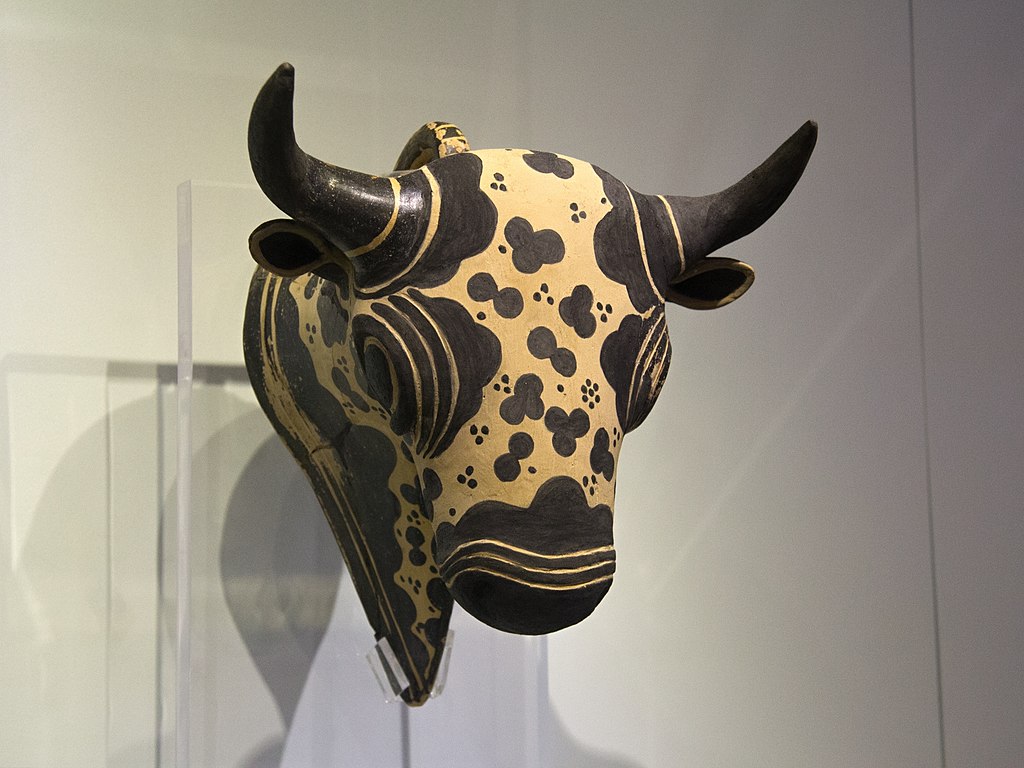
Beyond pottery, the Minoans excelled in the realm of frescoes, adorning the walls of their palaces and villas with captivating murals depicting scenes of daily life, mythological narratives, and vibrant landscapes. Moreover, their mastery extended to stone and metalwork, evident in the intricately carved seals, delicate jewelry, and imposing architectural elements that graced their palatial complexes and ceremonial sites. Through their artistic endeavors, the Minoans not only showcased their technical prowess but also conveyed a profound sense of creativity and cultural vitality that continues to captivate admirers to this day.
Frescoes
The bulk of Minoan frescoes discovered to date have emerged from two principal sites: the Palace of Knossos on Crete and the archaeological site of Akrotiri on the island of Santorini in the Cyclades. While these locations represent key hubs of Minoan civilization, the extent to which frescoes were disseminated throughout the broader Minoan world remains uncertain.

Nevertheless, their prevalence in these high-status sites underscores their significance within Minoan culture. These frescoes typically feature a repertoire of stylized and generalized imagery, depicting scenes that likely encapsulated common pictorial motifs emblematic of Minoan ideology and religion. Through their artistic expression, Minoan frescoes offer invaluable insights into the cultural and religious beliefs of this ancient civilization, inviting us to unravel the mysteries of their vibrant and enigmatic world.
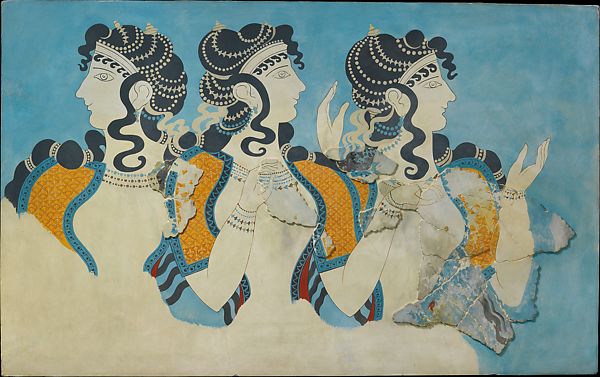
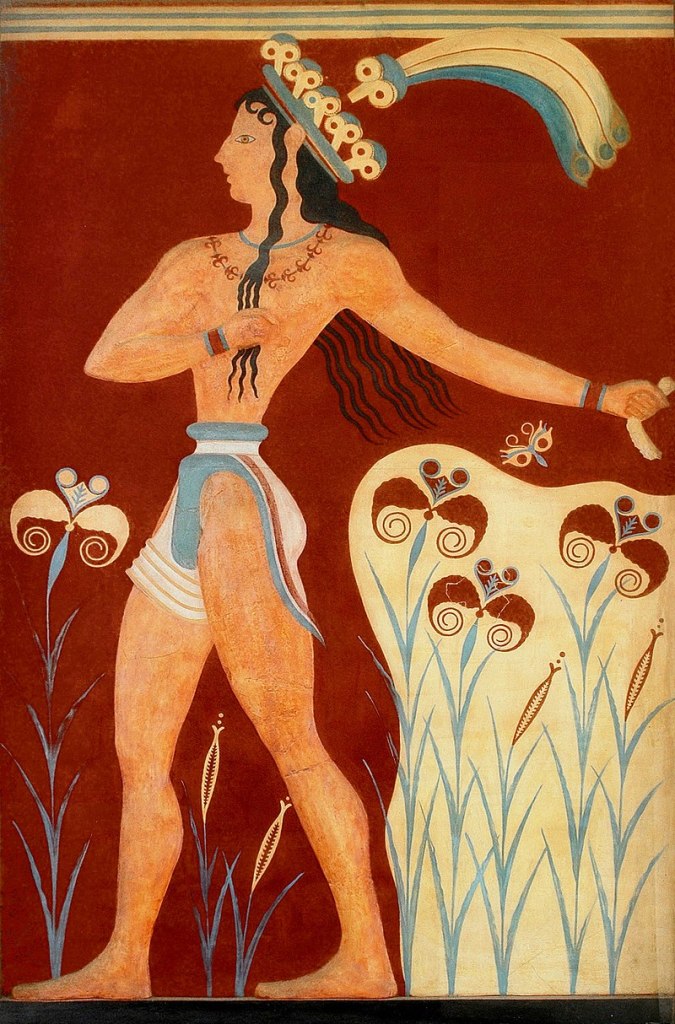
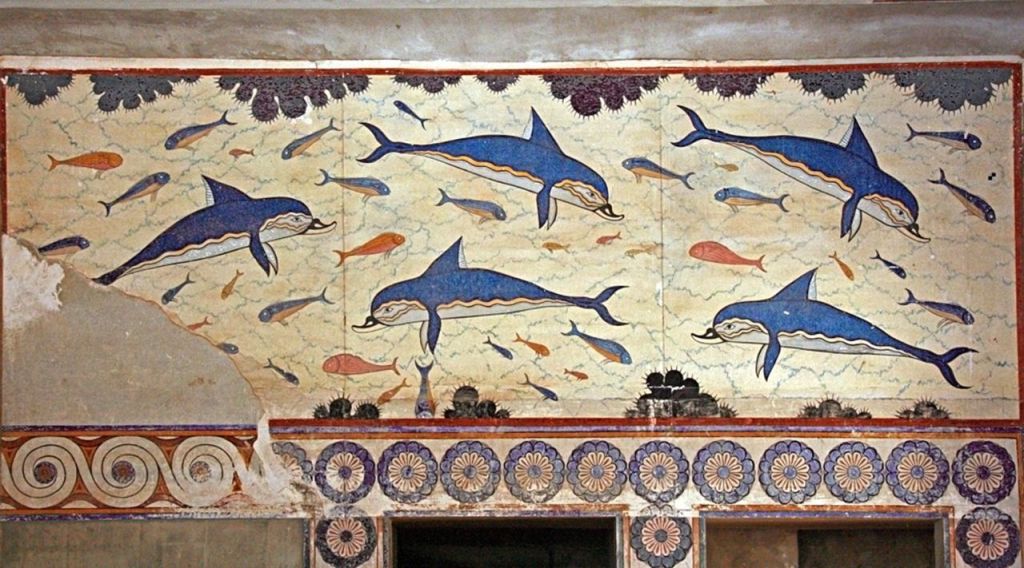
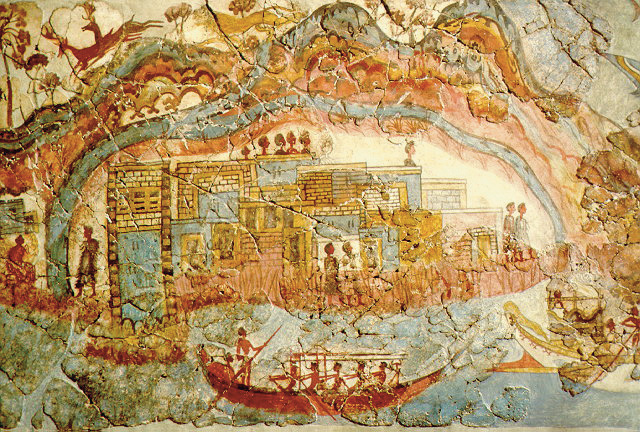
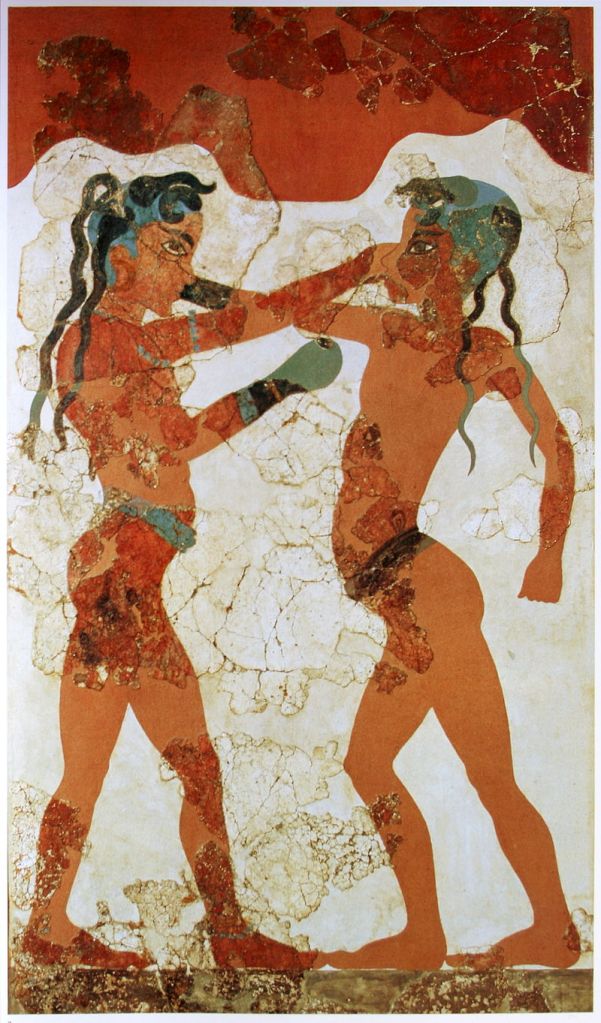
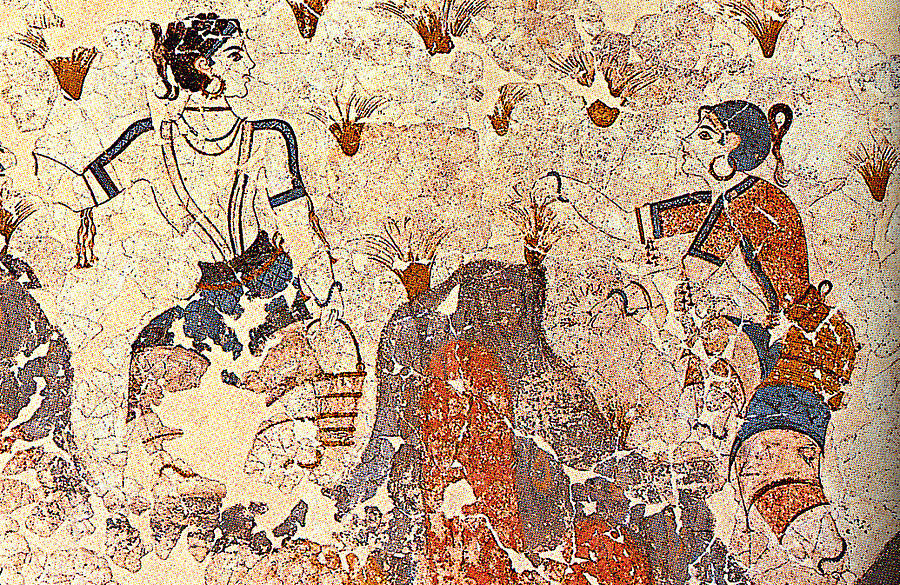

Pottery
Minoan pottery serves as a crucial tool for dating the Minoan civilization, offering a dynamic chronology of evolving artistic styles that mirror the patrons’ penchant for novelty. These pottery styles not only provide archaeologists with a means to assign relative dates to the layers of Minoan sites but also reveal insights into the aesthetic preferences and cultural trends of Minoan society.

Moreover, the discovery of pots containing oils and ointments, originating from 18th c. BC Crete, scattered across the Aegean islands, mainland Greece, Cyprus, coastal Syria, and Egypt, underscores the extensive trading networks and maritime prowess of the Minoans. Such widespread distribution points to the far-reaching commercial contacts and cultural exchanges facilitated by Minoan seafaring activities, highlighting their significance in the broader Mediterranean world.
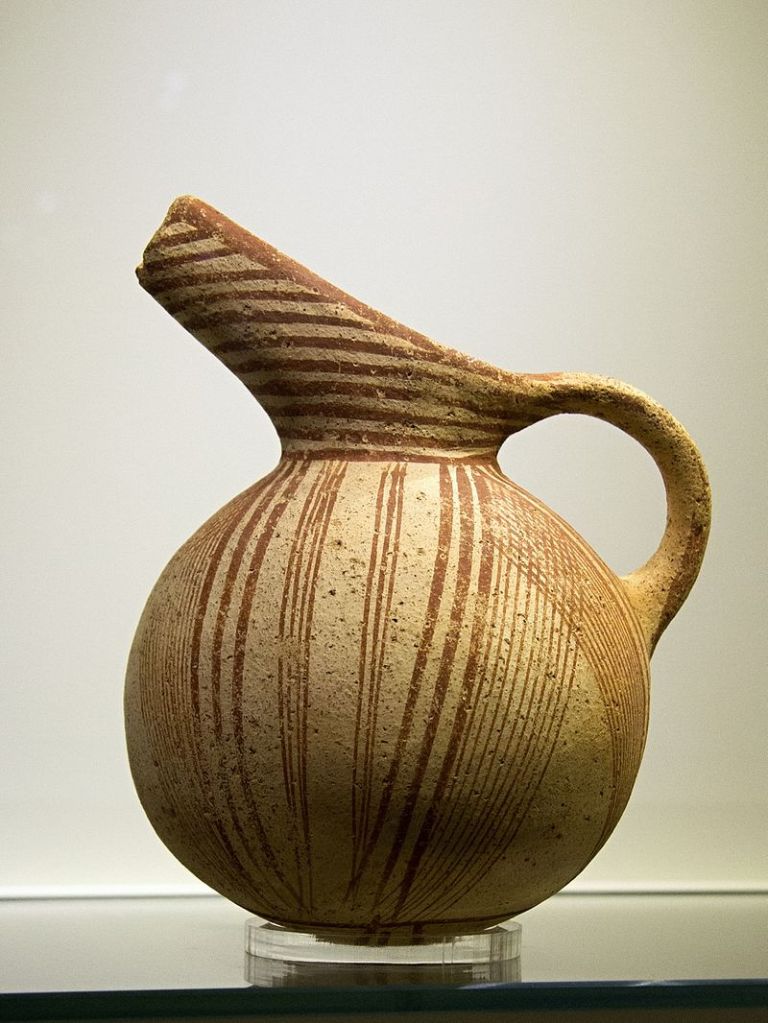
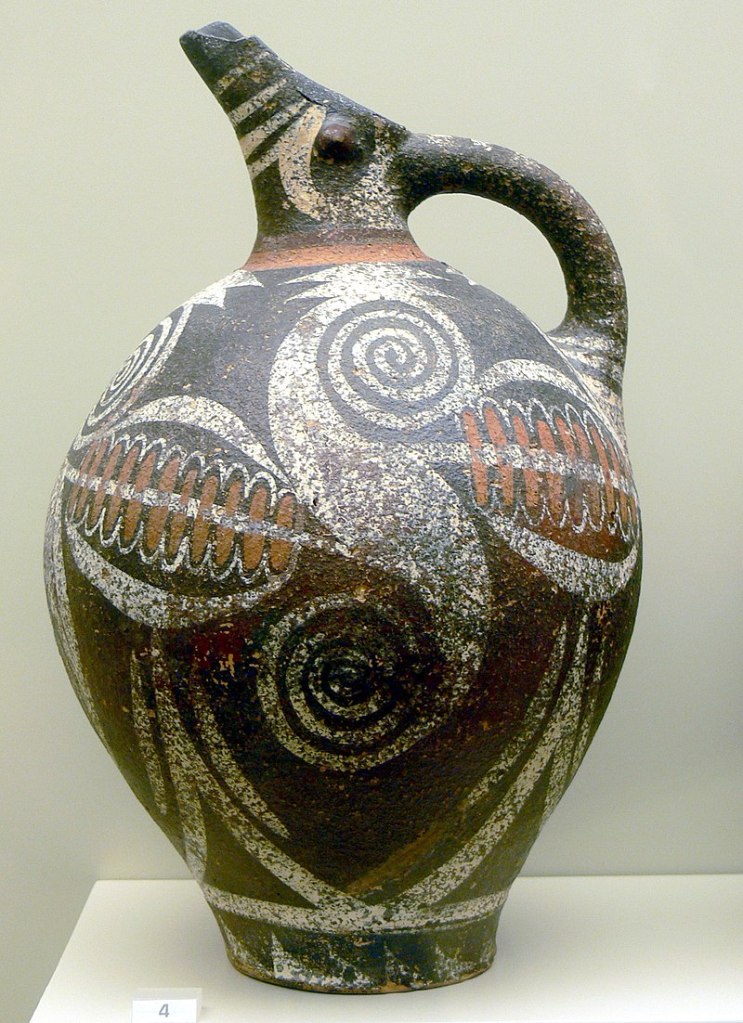
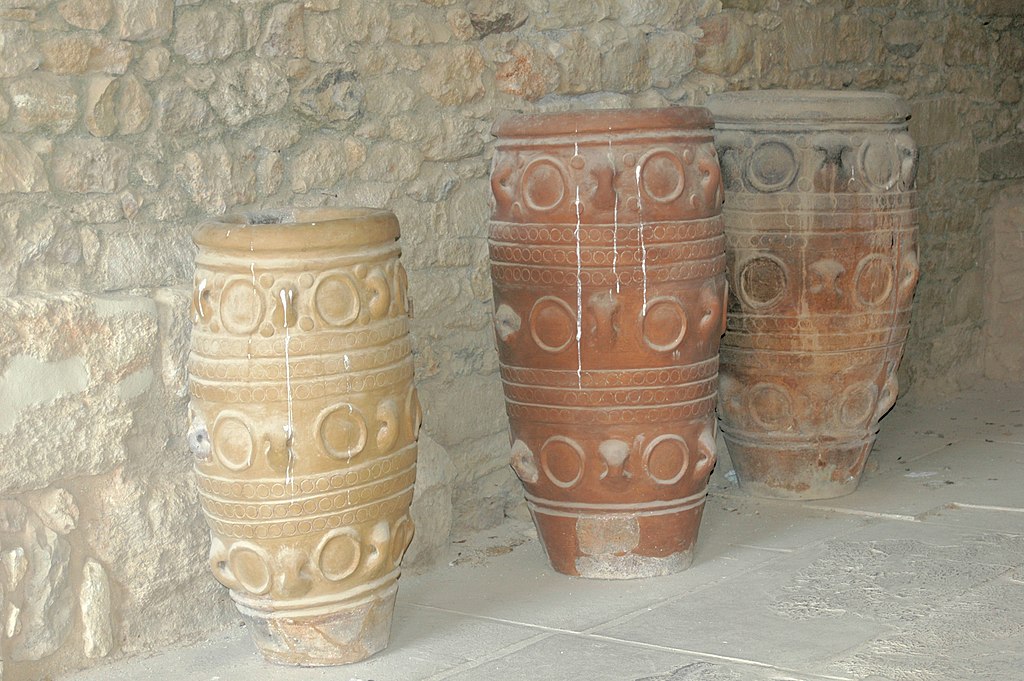

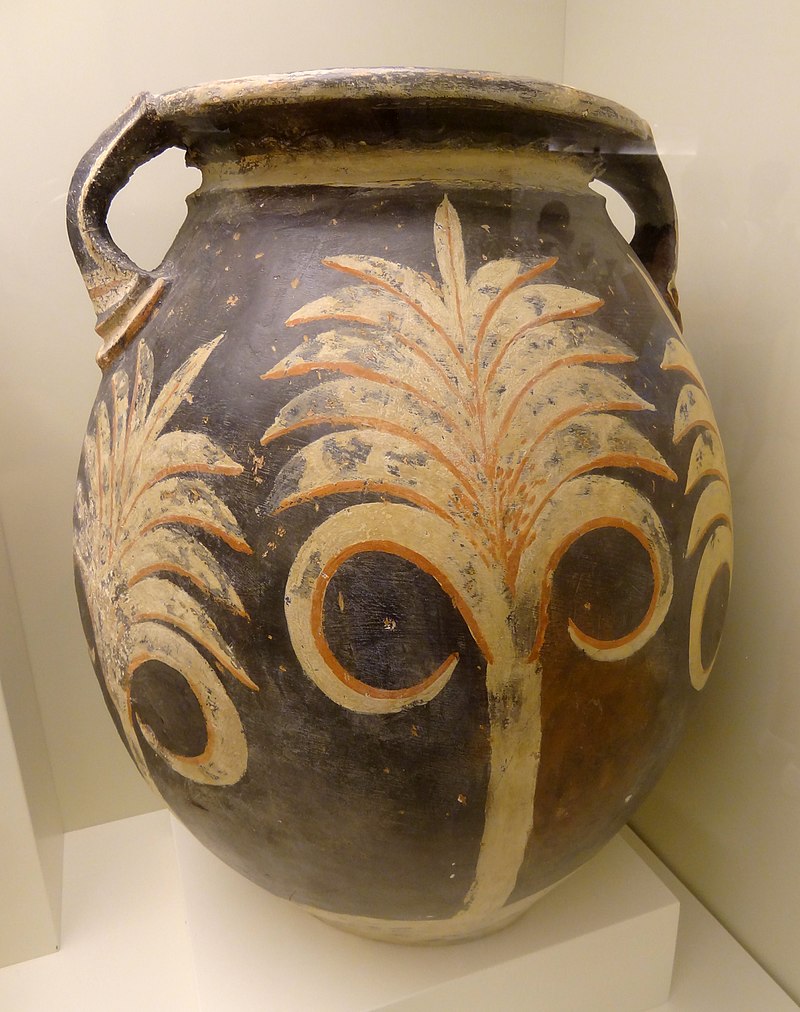
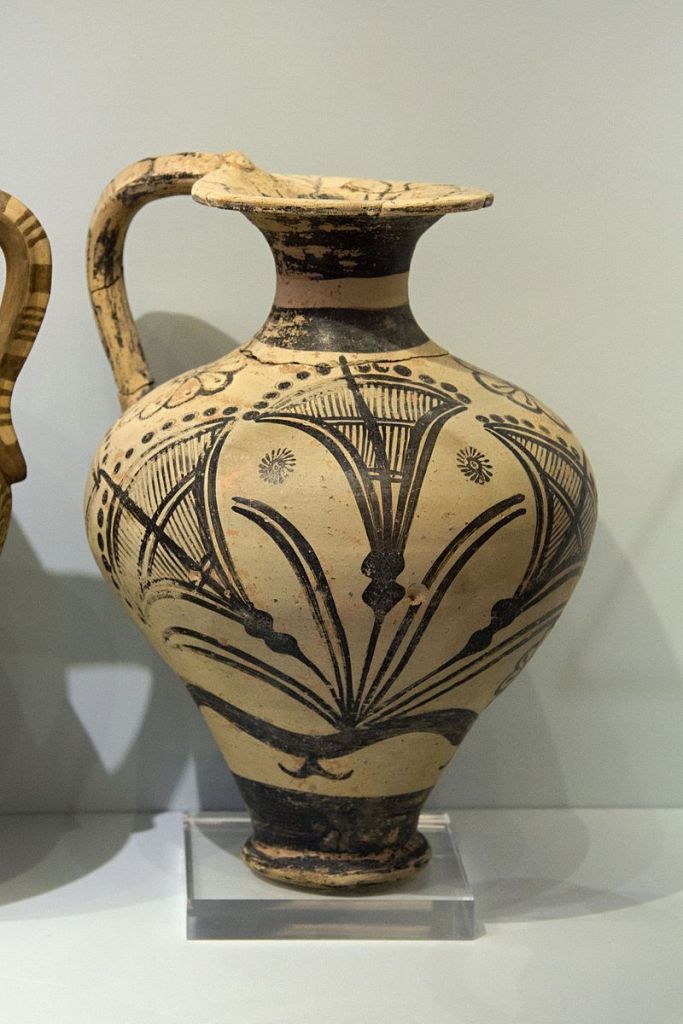
Other Art


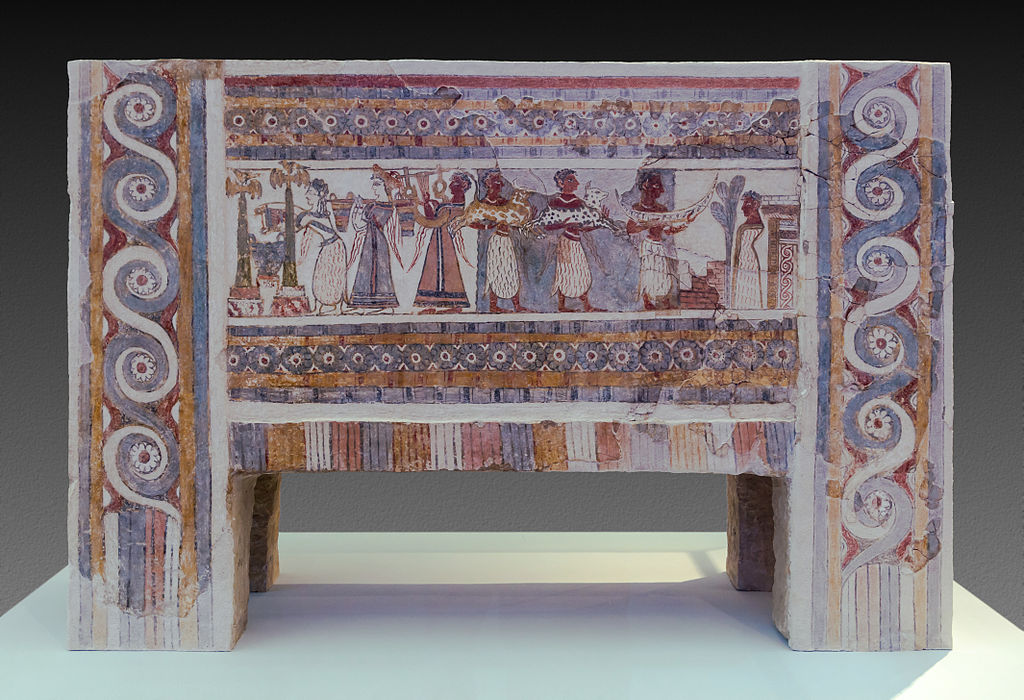
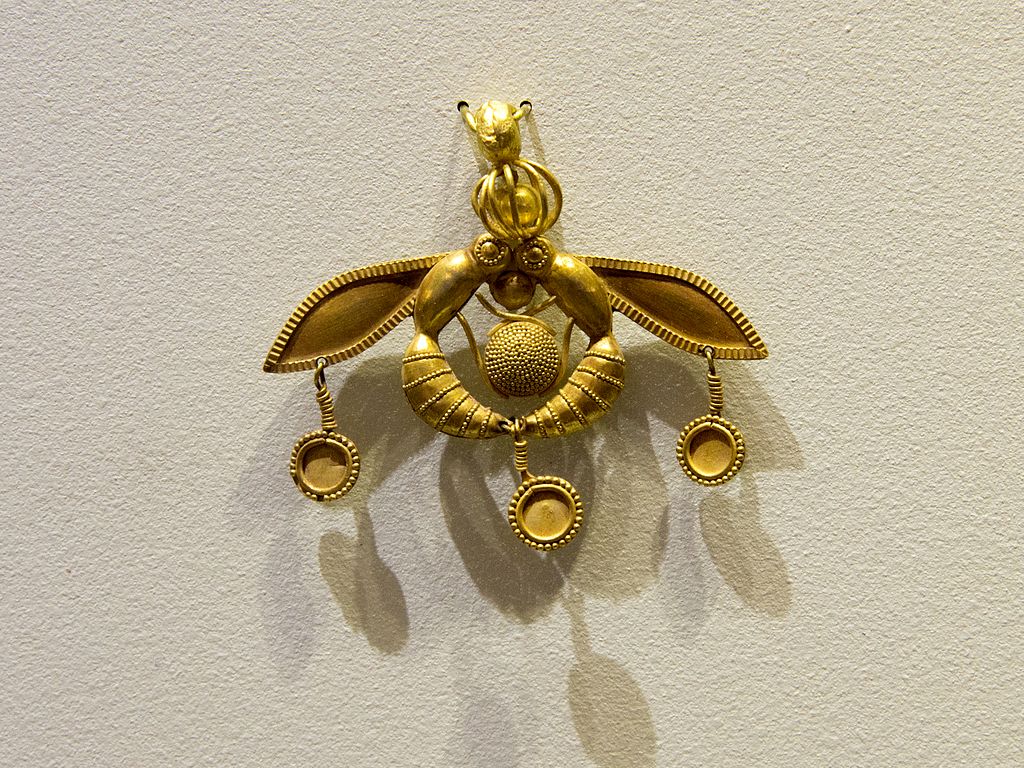
2. The Hagia Triada sarcophagus from Chamber Tomb 4 at Hagia Triada, near Phaistos, 1370-1315 BC. Heraklion Archaeological Museum. (c) Jebulon
3. The Bees Pendant from Chrysolakkos complex at Malia, 1700-1600 BC. Heraklion Archaeological Museum. (c) Zde
